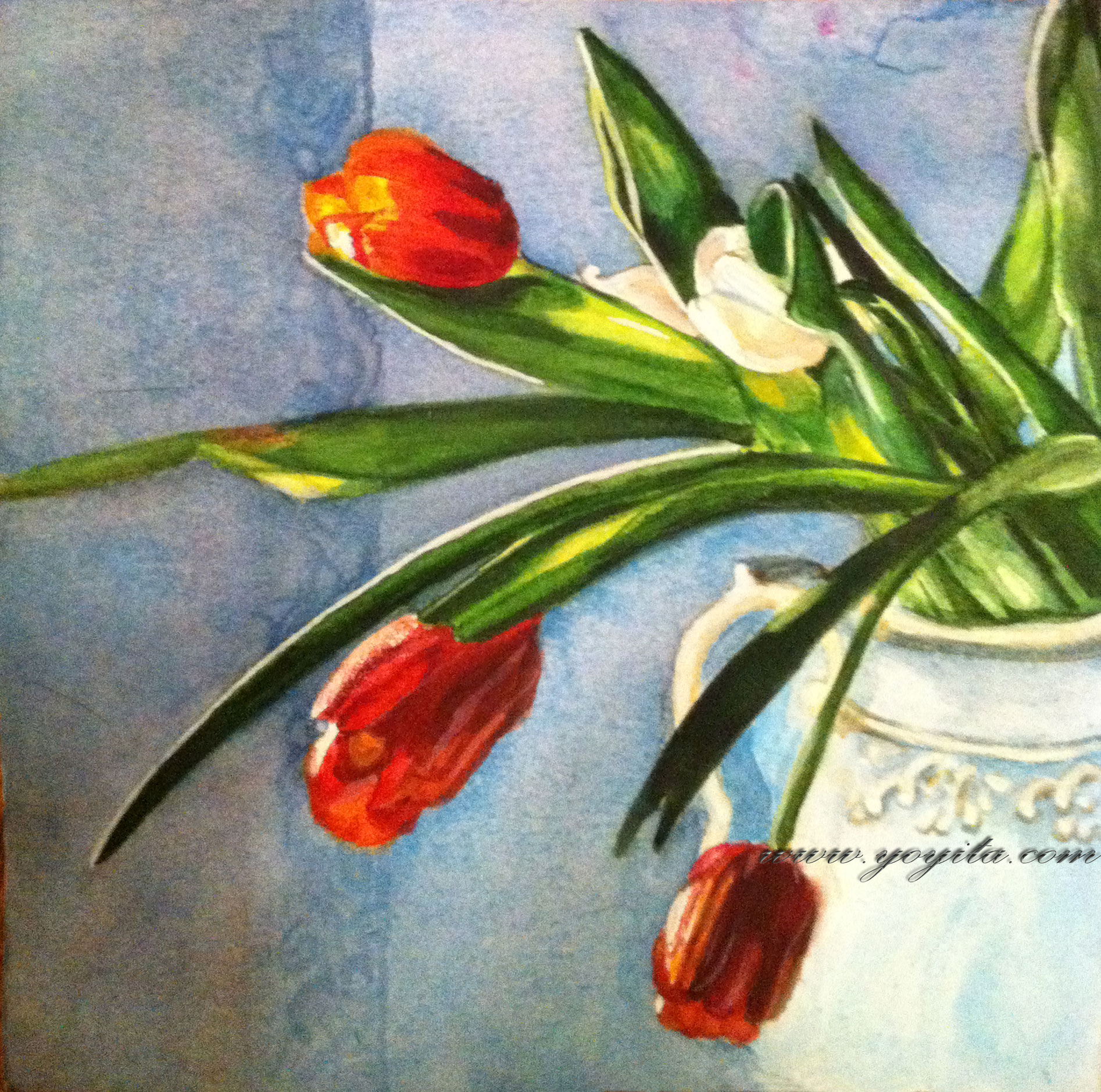

Send this page of Red tulips on vase watercolor to a friend
Flowers
Tulips |
 |
|||||
 |
|||||
|
• Parakeets • Washing clothes in the lagoon • The Magnolias • Mardi Gras
• Enlightment • Landscape and water • Nude 2 • Nude 3 |
Red tulips on vase |
Tulips, watercolor |
|||||||
Watercolor on Bristol vellum 6 by 6 inches |
 |
Acquerello su Bristol pergamena 6 da 6 pollici |
|||||
|
Precedente | Acquarello | Dopo |
||||||
Acuarela sobre papel Bristol 6 por 6 pulgadas |
Aquarela sobre papel vegetal Bristol 6 por 6 polegadas |
||||||
Anterior | Acuarela | Siguiente |
Precedente | Aquarela | Em seguida |
||||||
Aquarelle sur papier vélin Bristol 6 par 6 pouces |
ベラムブリストル上の水彩画 6インチで6 |
||||||
Précédent | Aquarelle | Après |
前 | ルネサンス | 次に |
||||||
Aquarell auf Pergament Bristol 6 von 6 Zoll |
水彩布里斯托尔羊皮纸的 6 x 6英寸 |
||||||
Vorhergehend | Aquarell | Zunächst |
|||||||
Watercolor of red and white tulips on a white vase |
|||||||
Watercolor of Red and White tulips |
|||||||
Tulip flower, watercolor paintingTulip The tulip is a perennial, bulbous plant with showy flowers in the genus Tulipa, which comprises 109 species[1] and belongs to the family Liliaceae. The genus's native range extends from as far west as Southern Europe, North Africa, Anatolia, and Iran to northeast of China.[clarification needed] The tulip's centre of diversity is in the Pamir and Hindu Kush mountains and the steppes of Kazakhstan. A number of species and many hybrid cultivars are grown in gardens, as potted plants, or to display as fresh-cut flowers. Most cultivars of tulip are derived from Tulipa gesneriana. Tulips are perennials grown from bulbs. Depending on the species, tulip plants can grow as short as 4 inches (10 cm) or as high as 28 inches (71 cm). The tulip's large flowers usually bloom on scapes or subscapose[further explanation needed] stems that lack bracts. Most tulips produce only one flower per stem, but a few species have up to four flowers. The colourful and attractive, cup-shaped flower has three petals and three sepals, which are often termed tepals because they are nearly identical. These six tepals are often marked near the bases with darker colorings. The flowers have six distinct, basifixed stamens with filaments shorter than the tepals. Each stigma of the flower has three distinct lobes, and the ovaries are superior with three chambers. The tulip's fruit is a capsule with a leathery covering and an ellipsoid to subglobose shape. Each capsule contains numerous flat, disc-shaped seeds in two rows per chamber. These light to dark brown seeds have very thin seed coats and endosperm that does not normally fill the entire seed. Tulip stems can have up to a few leaves, with larger species tending to have multiple leaves and smaller species having none. Plants typically have 2 to 6 leaves, with some species having up to 12 leaves. The tulip's foliage is strap-shaped with a waxy coating and alternately arranged on the stem. These fleshy blades have a light to medium green color and are linear to oblong in shape. Tulip bulbs usually grow on the ends of stolons, and the bulbs' tunicate (dry and papery) coverings may or may not have hairs. Although tulips are often associated with The Netherlands, commercial cultivation of the flower began in the Ottoman Empire. The tulip, or lale (from Persian لاله, lâleh) as it is also called in Iran and Turkey, is a flower indigenous to a vast area encompassing parts of Africa, Asia, and Europe. The word tulip, which earlier appeared in English in forms such as tulipa or tulipant, entered the language by way of French tulipe and its obsolete form tulipan or by way of Modern Latin tulīpa, from Ottoman Turkish tülbend ("muslin" or "gauze"), and is ultimately derived from Persian dulband ("turban").
Genre works, also called genre scenes or genre views, are pictorial representations in any of various media that represent scenes or events from everyday life, such as markets, domestic settings, interiors, parties, inn scenes, and street scenes. Such representations may be realistic, imagined, or romanticized by the artist. Some variations of the term genre works specify the medium or type of visual work, as in genre painting, genre prints, genre photographs, and so on. Genre painting Genre painting, also called genre scene or petit genre, depicts aspects of everyday life by portraying ordinary people engaged in common activities. One common definition of a genre scene is that it shows figures to whom no identity can be attached either individually or collectively - thus distinguishing them from history paintings and portraits. A work would often be considered as a genre work even if it could be shown that the artist had used a known person - a member of his family, say - as a model. In this case it would depend on whether the work was likely to have been intended to be perceived as a portrait by the artist - sometimes a rather subjective question. The depictions can be realistic, imagined, or romanticized by the artist. Because of their familiar and frequently sentimental subject matter, genre paintings have often proven popular with the bourgeoisie, or middle class. The petit name contrasts this with the grand genre, history painting. Genre themes appear in nearly all art traditions. Painted decorations in ancient Egyptian tombs often depict banquets, recreation, and agrarian scenes, and even medieval prayer books such as the Book of Hours (see Les Tres Riches Heures du Duc De Berry) are decorated with "peasant" scenes of daily life. |
|||||||
|
|||||||
| Category:Persian loanwords Category:Flowers Category:Garden plants Category:Tulipa Category:Ornamental plants Category:Liliales genera |
| Amazon |
|
Red and white tulips Copyright 1976-2013 Dr. Gloria Norris.
Click
|
Tulips |